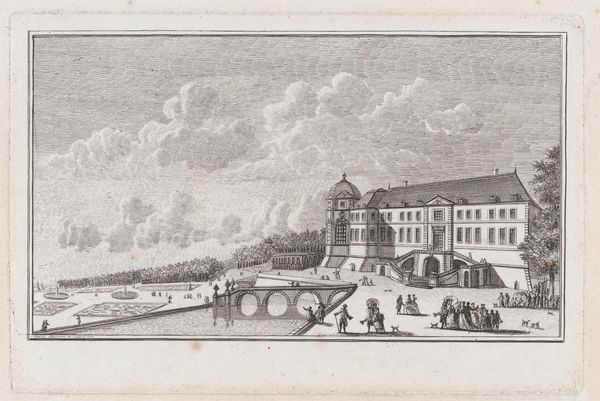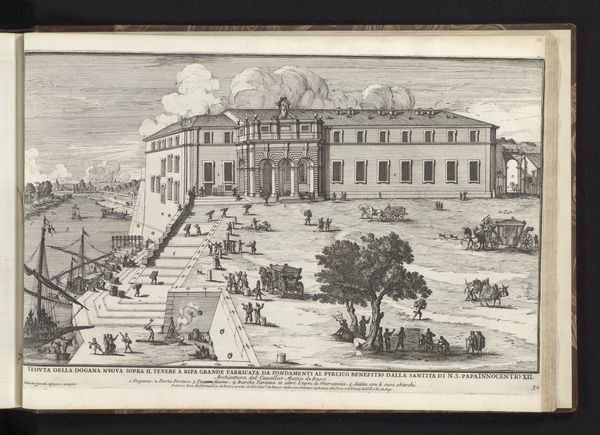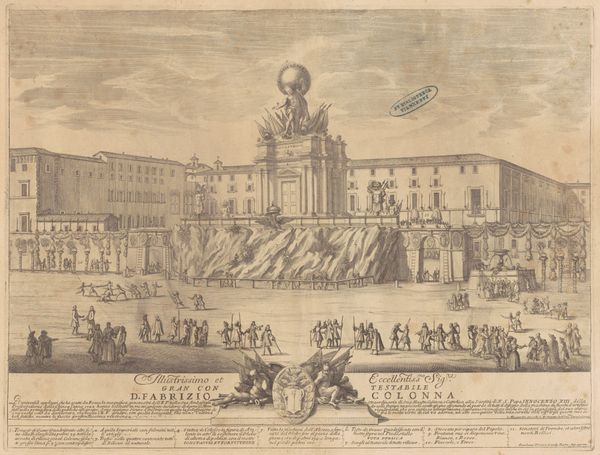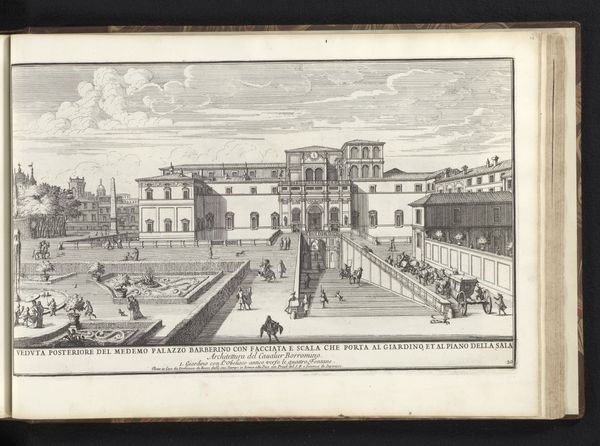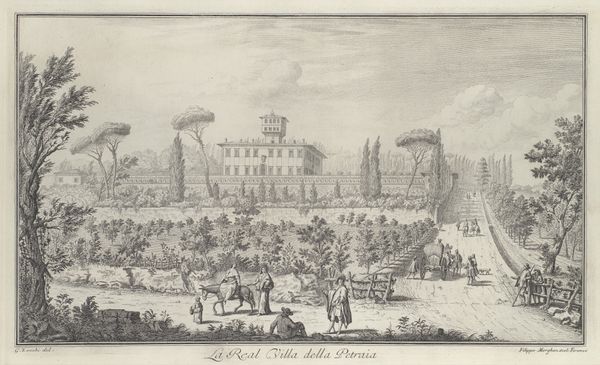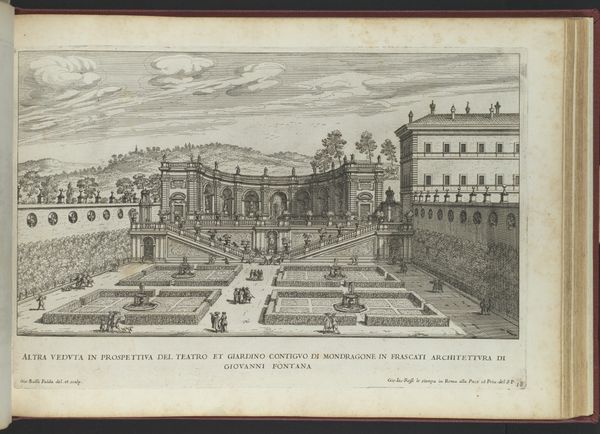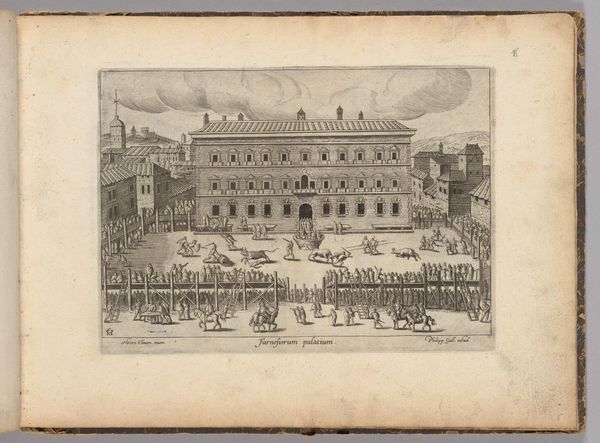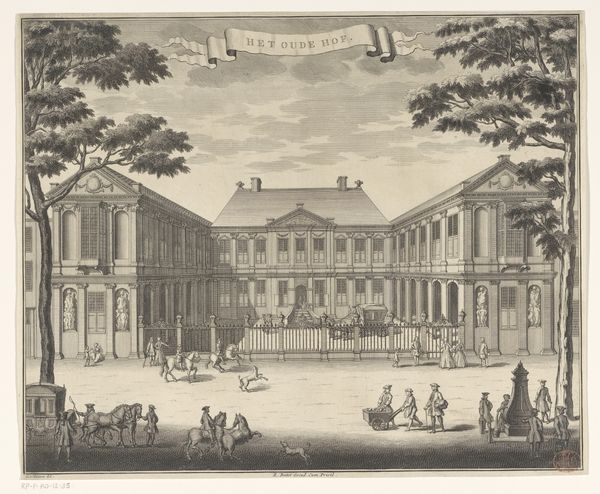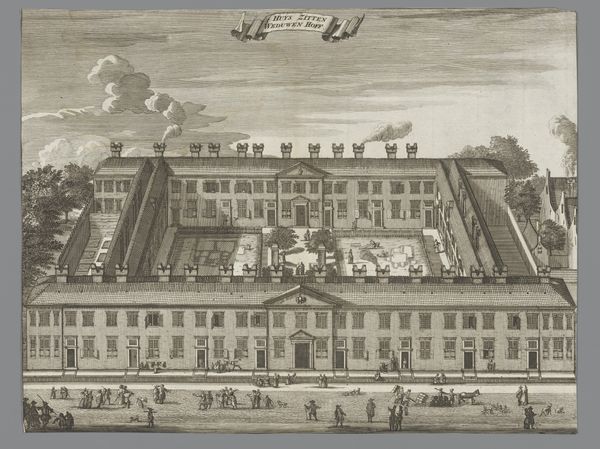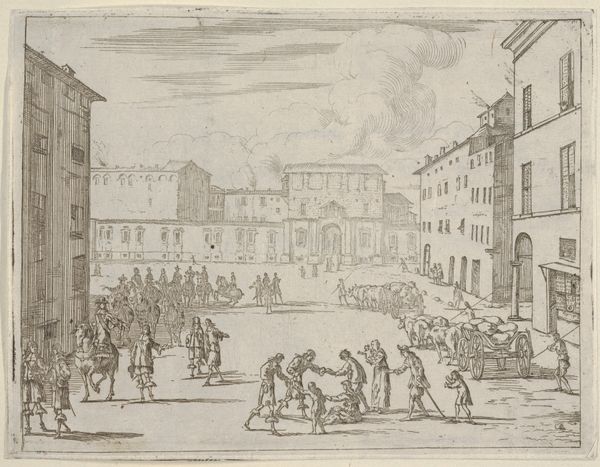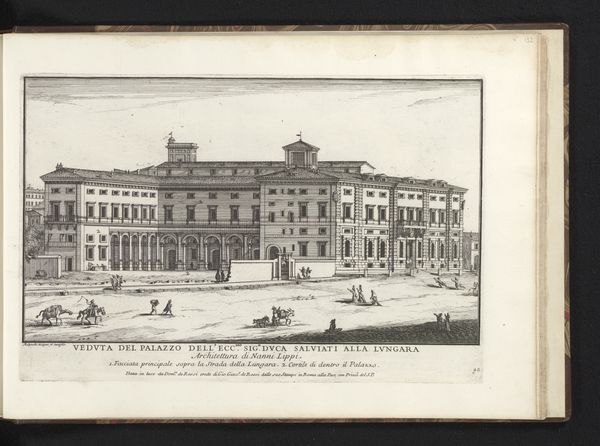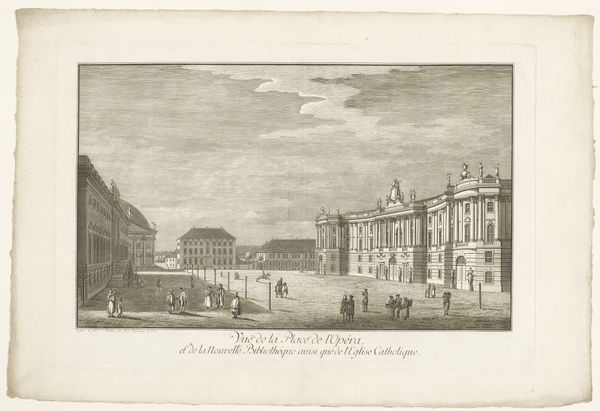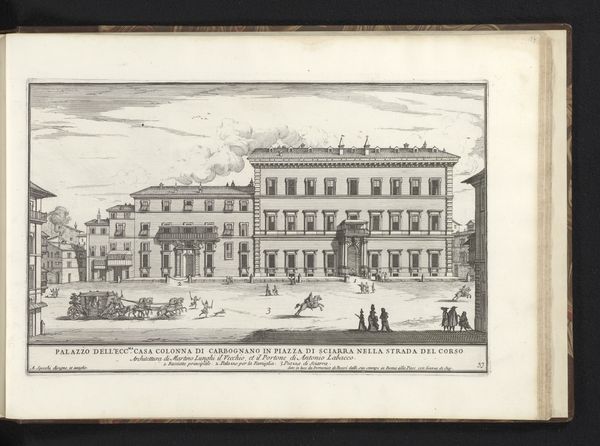![Francesco I d'Este Builds the Palazzo di Sassuolo, from L'Idea di un Principe ed Eroe Cristiano in Francesco I d'Este, di Modena e Reggio Duca VIII [...] by Bartolomeo Fenice (Fénis)](/_next/image?url=https%3A%2F%2Fd2w8kbdekdi1gv.cloudfront.net%2FeyJidWNrZXQiOiAiYXJ0ZXJhLWltYWdlcy1idWNrZXQiLCAia2V5IjogImFydHdvcmtzL2ViNTM1ODJjLWE0NDQtNDFkNi04N2QwLWIwMjcwZDIwYzM1OC9lYjUzNTgyYy1hNDQ0LTQxZDYtODdkMC1iMDI3MGQyMGMzNThfZnVsbC5qcGciLCAiZWRpdHMiOiB7InJlc2l6ZSI6IHsid2lkdGgiOiAxOTIwLCAiaGVpZ2h0IjogMTkyMCwgImZpdCI6ICJpbnNpZGUifX19&w=3840&q=75)
Francesco I d'Este Builds the Palazzo di Sassuolo, from L'Idea di un Principe ed Eroe Cristiano in Francesco I d'Este, di Modena e Reggio Duca VIII [...] 1659
0:00
0:00
drawing, print, engraving
#
drawing
#
baroque
# print
#
cityscape
#
history-painting
#
engraving
Dimensions: Sheet: 4 3/4 × 6 5/16 in. (12 × 16 cm) Plate: 4 3/4 × 6 1/8 in. (12 × 15.6 cm)
Copyright: Public Domain
Curator: Let’s examine this engraving, dating back to 1659, by Bartolomeo Fenice, an Italian artist active in the Baroque era. The work, residing at the Metropolitan Museum of Art, portrays "Francesco I d'Este Builds the Palazzo di Sassuolo." What strikes you upon viewing this scene? Editor: I'm struck by the almost clinical rendering, the building meticulously constructed through the precise and orderly lines. It feels less like a celebration and more like a blueprint rendered with self-conscious elegance. Curator: Precisely. The print isn’t just documentation; it serves a rhetorical purpose. Published within "L'Idea di un Principe ed Eroe Cristiano in Francesco I d'Este," this imagery reinforces the Duke's power through his architectural endeavors. Notice how the scaffolding and activity do not detract but instead amplify the image of ceaseless progress and dominion. Editor: The architecture does feel somewhat detached from the human element. Though activity teems, the individuals appear subservient in scale. Their forms are repetitive, lacking definition. What’s crucial here is the Palace, a physical assertion of ducal authority. What structural qualities catch your attention? Curator: The rigorous linear perspective creates an immense field depth, allowing our eyes to scan every facet. The building is nearly complete, a geometric progression rendered impeccably with a strong play of verticals and horizontals that suggest stability, interrupted only by ephemeral clouds and scaffolding. Editor: It seems strategic how the structure under construction allows the print to function both as historical record and an exercise in branding, so to speak. Even the groups of figures are composed strategically, echoing architectural order with human choreography. Curator: Agreed, and within Baroque artistry, even urban design becomes an apparatus for asserting political control. Each structural detail within Fenice’s etching contributes, both literally and symbolically, to establishing that control. This print visualizes the intersection of power, architectural intention, and propagandistic messaging. Editor: Thank you. It is sobering to think how lines and forms alone, coupled with socio-political intent, render structures that influence how authority is both perceived and wielded.
Comments
No comments
Be the first to comment and join the conversation on the ultimate creative platform.
